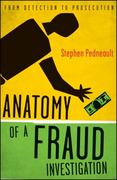

Solve problem 2.5
Problem 2.4. Consider an economy where the aggregate demand function is given by the following equation: 2 Mt Y: = 445 + 0,551: + 1() 3 Pt and the price adjustment mechanism is described by the function: Yt_1 800 E Ht=0,3(800 )+1rt In equilibrium, the price level is 1, investment expenditure is PLN 100 billion, and the nominal money supply is PLN 180 billion. Calculate whatwill happen to the economy as a result of the interest rate hike by the central bank, which will cause a decrease in investment and nominal money supply in equilibrium, PLN 20 billion each. a) Calculate ination. price levels and GDP for the rst ve years following the tightening of monetary policy, assuming people expected price stability. b) Illustrate the mechanism of economic adjustment using the ASAD model. c} Perform analogous calculations for 8 years, assuming that ination expectations are adaptive and can be expressed as it? = 0,4rr[_1. d) Describe the process of adjusting the economy to higher interest rates for both scenarios. Problem 2.5. Consider the economy presented in Problem 2.4 and assume that there was no inflation (i.e. prices were stable} at equilibrium and that households did not expect it in the future. Analyze how the economy will react to an exogenous price shock {e.g. a global increase in oil prices} that will cause a one-offjump in prices by 10% in the rst year. a) Calculate the paths of ination. GDP and prices in the following years. After how many years will the economy (approximately) return to equilibrium? b) Analyze the reaction of the economy in a situation where the central bank increases the nominal money supply by 5% in the rst year. so as to mitigate the effects of nominal money demand growth. How long will it take the economy to recover this time? c} How quickly will the economy return to equilibrium if the central bank keeps the real money supply unchanged? {1) Compare the final new price levels in equilibrium in points (a)(c}. What is the difference? e) How would your answers differ, if ination expectations in the economy were adaptive {e.g. H8 2 0.4IT[_1}? f) Why does the central bank sometimes decide to tighten monetary policy amid a large price shock? Year (1) Output (71) Investments Money suppInflation ( Prices (I'm Expected inflation (nen) 800,00 180 1.090 With the initial increase of the nominal money supply by 5%%, it 2 786.364 100 189 1.100 increased by 9. before retiring to the normal level, The initial increase allowed the economy to recover in about 31 years as 3 776,498 opposed to ill in the previous question. 180 -1.364% 783.152 100 -2.350% lee LOOD 788.005 190 180 -1.685% 1.042 791.501 1 80 -1 200% 1.129 794.080 100 180 0.850% 1.020 795,775 100 180 -0.600% 1.014 797.030 100 150 1 010 10 797.915 100 180 -0.297% 1 007 11 708.537 -0.209% 1005 12 798.975 190 180 -0.145% 1.103 13 709.281 100 180 0.1039% 1 102 14 709 497 180 -0,0729% 1002 15 799.647 190 180 0.050% L.OOO1 16 790.753 100 180 -0.035% 1.901 17 799.827 100 180 -0.025% 1.001 TH 749,874 100 180 -0,017 19 799.915 10O 180 0,012% 1.000 20 799.941 100 180 LOGO 21 799.958 100 180 -0.0069 799.971 100 180 23 709.980 100 180 -0,0030 24 799,986 100 180 -0,0034 25 709.940 100 180 0,001% 26 7094193 180 -0.00194 LOOD 799.995 100 180 -0.001% 740.907 100 180 -0.0009% LOOD 29 799.998 100 180 -0.060%% 1.OOD 799.908 100 180 31 709.909 100 180 -0,000%% 1.000 32 709 940 100 180 -0,8050% 37 799.099 100 180 -41.000% 1.0190Output (Y0 Investments Money suppInflation (at Prices (PO) Expected inflation (net) 800 DOO 180 1.090 With the increase of the money supply by 5%, the 2 786 364 100 189 1.100 supply increased from 180 to 189. With that increase. the economy only look about 28 years to recover as opposed to 31 in the previous question 3 790 323 189 3-1:364% L.085 4 793.160 100 189 -0.968 1074 5 795-179 189 -0.681% 1.067 6 796.609 100 189 -0.482% 1,062 7 797.618 100 189 -0.339% 1.058 798 329 100 189 -0.238%% 1.056 798. 828 189 -0.167% 1.054 10 799 179 100 189 0.117% 1.053 11 799.425 100 189 -0.0826 1.052 12 799.507 100 189 -0.058% 1.051 13 799.718 100 189 -0.040% 1.051 14 790 802 100 189 -0.028% 1051 15 799 862 100 189 -0.020% 1.050 16 799.903 189 -0.014% 1.050 17 799.932 189 -0.010% LOSO 799.953 100 189 -0.007% 1050 19 799.967 100 189 -0.005% 1.050 20 799.977 100 189 -(.003% 1.OSO 21 799.984 100 189 -0.002% 1.050 12 799.989 IDD 189 1.050 23 799 902 100 189 -0.001% 1.050 24 799.944 100 189 -0.001% 1.050 25 799.996 100 189 1.050 26 799.597 100 189 -0.000% 1.050 27 799.998 189 1.050 ibritim 28 709 909 100 189 -0.D00% 1.050 799 909 100 189 2-0.000% 1.050 30 799 909 100 189 -0 000 1.050











